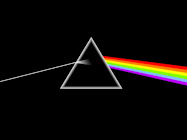do it yourself? This is one way to save some money but
- do you have the time
- do you have the tools
- do you have the space for storage
on how to have a lawn.
A nice lawn just doesn't happen.
If you intend to do it yourself, don't forget to start early, March is good. Get a low nitrogen
fertilizer (the first # in the analysis) 13-3-7 or so is a good early spring fertilizer. Many companies have been leaving the middle # (phosphorus) at 0 (not god for ground water to have phosphorus in it) 1.5 pounds will suffice for the entire growing season.
The lawn will require a herbicide on this application but it is a dry product and can easily be applied in combination with the fertilizer. Pre-emergence herbicide will fight crabgrass as the
primary pest but also, put down at the right time will control a few of the broadleaf weeds; chickweed, henbit and oxalis to name a few. Some of the lawns I treat will get 2 treatments of pre-emergence; when crabgrass as been a real problem in the past.
The application rate on this application is 4#/ 1000 sqft.
Be sure to get a uniform coverage, rotary spreader should 'throw' the material back to the wheel mark of your last pass.
This application will provide the lawn with nutrients for 7 weeks, keep the crabgrass down and start your lawn into the growing season.
 Watch for this. Redthread is easier to see in a well manicured lawn. This disease (fungal ) is prevalent in the early spring. An application of nitrogen will normally to the trick on this one.
Watch for this. Redthread is easier to see in a well manicured lawn. This disease (fungal ) is prevalent in the early spring. An application of nitrogen will normally to the trick on this one.2nd Application:
- Fertilizer @3.4/k (24-0-5) this analysis will do well on 4 of the remaining 5 applications
- Post- emergence Herbicide (Momentum) approx 1gal/k
Again uniform coverage with the rotary spreader (back to the wheel marks)
Weed control does not need to overlap but is a good habit to be sure all of the lawn is treated. Be careful, you are spraying selective herbicide, and about the only thing in your yard it won't damage (as plants go) is the turf.
Each treatment comes with its individual problems and pests. #3 becomes more of a spot treat for weeds with some additional pests added. Crabgrass is still germinating but foxtail and some other grassy weeds enter the picture and the post emergence herbicide is also changed to a product that will effectively control resistant weeds. We also decrease the fertilizer application rate to 3.14/k
7 weeks, that's the magic number.
water is a must, break out the sprinkler if its not raining enough
keep your mower blades sharp, don't cut more than 1/2 the plant off. A real good rule of thumb is the hotter the higher. I always set my mower as high as it would go and left it there (back when I had a lawn)
Fall aeration is recommended

Application #6 is to some "the winterizer". Your lawn should be good and dense (some take about a year to develop) This application will provide nutrients stored over the winter. Nitrogen is the nutrient the lawn needs. Using 35-0-5 will provide nitrogen available through the dormant part of the plants growth cycle and when it comes out of dormancy nutrients will be needed for improved color and growth.
The biggest advantage to hiring a service to treat your lawn is the technician. A few questions should give you an easy clue to how knowledgeable the technician is. As weeds go its not so important to identify the weed as it is to know what product will get the best control of that weed.






No comments:
Post a Comment